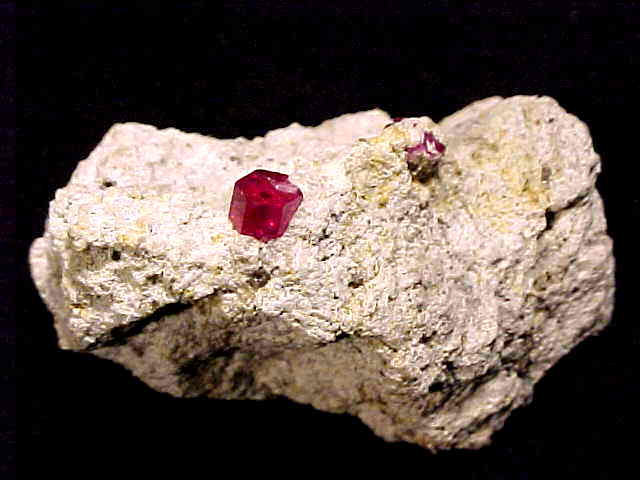


Enter our Virtual Gallery of Bixbite Mineral Specimens
MINERALMINERS.COM®- Your Personal 'Link' Direct to the Mines!TM




Links To Bixbite Information Topics On This Page:
Bixbite items in our VIRTUAL GALLERY
Bixbite (red Beryl) Physical Properties
Bixbite (red Beryl) Background Info
Bixbite (red Beryl) Occurance and Diagnostic Features
Bixbite (red Beryl) History and Uses
Bixbite (red Beryl) Metaphysical Properties
Beryl (Be3Al2(Si6O18) is a relatively common mineral although it does contain the rare element beryllium. It is most well known however for its gem varieties: the pale green to blue aquamarine , the intense green emerald , the pale yellow to yellowish-orange heliodor and the pale pink to salmon colored morganite. Beryl also occurs as the colorless gem variety goshenite, and as the very rare red gem beryl variety bixbite.
Bixbite (Be3Al2Si6O18) is very rare in nature, known to occur in only a few localities in the Western United States and possibly one location in Mexico. In 2002, a deep pink variety of what was thought to be beryl was discovered in Madagascar, however it is actually a new mineral species known as Pezzottaite that is different but closely related to beryl.
Bixbite, or red beryl, occurs in a type of silica-rich volcanic rocks known as "topaz bearing rhyolites". Bixbite crystallizes under conditions of low pressure and high temperature from a pneumatolitic (gas) phase along fractures or within miarolitic cavities and porous areas of rhyolitic magmas at or near the surface. Associated minerals are orthoclase, quartz, bixbyite, topaz, spessartine garnet, pseudobrookite and hematite.
The red color of Bixbite is thought to be due to the element manganese (Mn2+) substituting for aluminum in the beryl structure.
Bixbite is usually recognized by its color, form, hardness and specific gravity.
Bixbite was named after the mineral collector Maynard Bixby.
Bixbite is used as a gemstone. Gem quality material is very rare and the largest faceted gemstones are less than three carats in size.
The astrological signs of bixbite are Taurus and Aries.
Return to the Index of Bixbite Information Topics
Bixbite is said to enhance one's physical energy and creativity, and to stimulate awareness. It is also said to give harmony and compatibility in relationships, and to help one overcome grief and depression.
Bixbite is said to help strengthen and heal the heart and lungs, and to help remedy various disorders of the digestive system.
For more in-depth metaphysical information, see our Metaphysical Books section.
This is the end of our Bixbite (red Beryl) Factsheet and Information page.
| Bixbite (red Beryl) Mineral Specimens |
Bixbite (red Beryl) Gemstones |